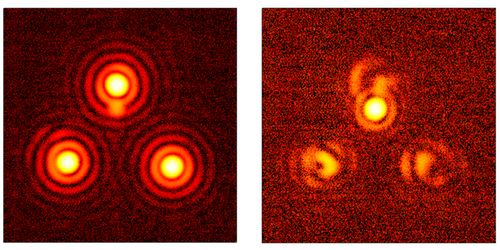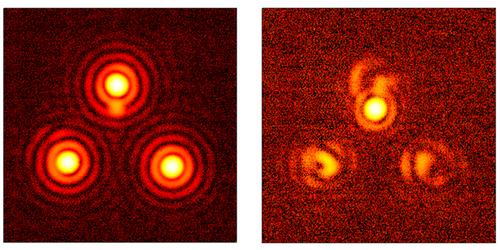Blocking out Starlight
Astronomers have an array of tools to detect exoplanets. Now, Etienne Brasselet from the University of Bordeaux, France, and colleagues have proposed an update to one of these—a vortex coronagraph—that could allow exoplanets in systems of two or more stars to be spotted directly.
A vortex coronagraph imparts an outward spiral path to incoming light from a point source in space, bending the light along a route that is no longer coincident with the telescope’s camera. In doing so, it blocks light from the source, allowing faint objects close to the source to become visible—the objects’ photons pass through the device unhindered. Such objects include exoplanets orbiting host stars. But current vortex coronagraphs can only dim one source at a time—that’s ok for imaging a planet that has a single host star but not for one with multiple stars.
The vortex coronagraph proposed by Brasselet and co-workers utilizes reconfigurable defects in a liquid crystal to impart spiral paths to point sources of light—traditional devices use frozen-in single defects in a variety of materials. Using laser beams, multiple defects can be written into and erased from the liquid crystal quickly and with pinpoint accuracy. This allows the device to be easily configured for any star system, regardless of the number of stars it comprises. As a proof-of-principle demonstration, the team simulated a triple-star system in the lab using three light beams, and they directed the beams into a device with three defects. They found that the device drastically dimmed the light that reached the camera from these artificial stars. The device could include any number of defects, significantly expanding the capabilities of current vortex coronagraphs.
This research is published in Physical Review Letters.
–Katherine Wright
Katherine Wright is a Contributing Editor for Physics.





